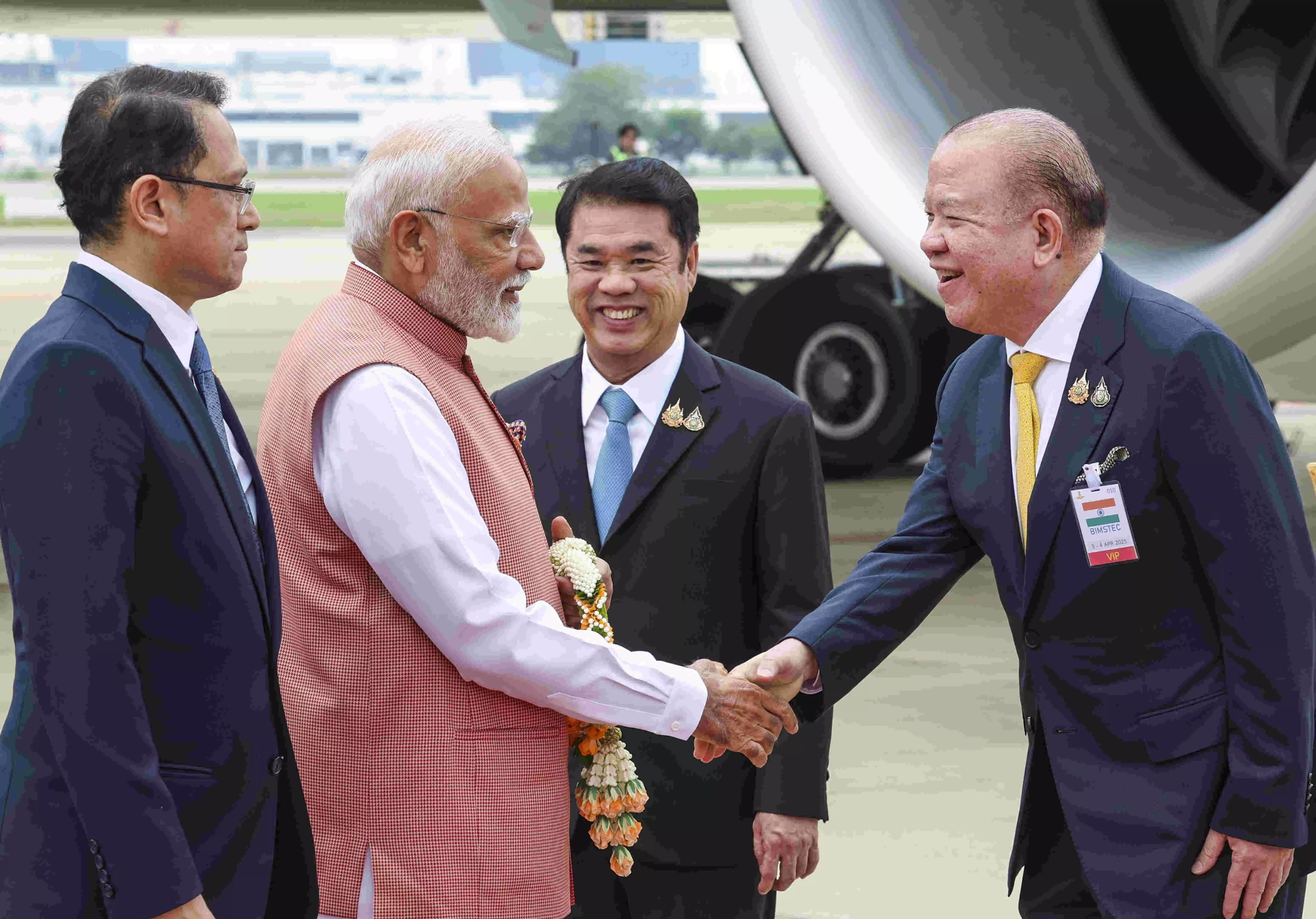Prime Minister Narendra Modi’s recent diplomatic outreach to Thailand and Sri Lanka—framed around the BIMSTEC (Bay of Bengal Initiative for Multi-Sectoral Technical and Economic Cooperation) summit—may look routine on the surface. But in South Asia’s fluid geopolitical theatre, timing and symbolism are everything. Modi’s travel itinerary, especially his deliberate visit to Colombo, is being read by analysts as a quiet yet powerful reset: a message to India’s neighbours, and a warning to Beijing.
While the BIMSTEC summit in Bangkok provided a multilateral stage for economic and security discussions among the seven-member bloc, it was Modi’s stop in Sri Lanka that stood out. The visit came at a time when the island nation is slowly recovering from its worst economic crisis in decades. In 2022, Sri Lanka defaulted on its sovereign debt for the first time in history. A crippling shortage of fuel, food, and medicine pushed the country into chaos, leading to mass protests and the ousting of President Gotabaya Rajapaksa.
During the crisis, many had expected China—Sri Lanka’s largest bilateral creditor—to bail it out. After all, China had flooded the island with billions in loans for infrastructure under its Belt and Road Initiative (BRI), including the now-infamous Hambantota Port project. But Beijing hesitated, offering limited restructuring and little cash assistance. India, by contrast, stepped in with over $4 billion in aid, including emergency fuel and food supplies, currency swaps, and lines of credit.
This contrast has not gone unnoticed in Colombo—or across the region. Modi’s visit served as a diplomatic reminder that when push came to shove, it was India, not China, that acted as a genuine partner. His meetings with Sri Lankan President Ranil Wickremesinghe and other top officials emphasized not only economic cooperation but maritime security in the Indian Ocean—an implicit nod to growing concerns over Chinese naval presence and surveillance vessels frequenting Sri Lankan ports.

But it wasn’t just Sri Lanka on the radar. On the sidelines of the summit, Modi also held a carefully choreographed meeting with Muhammad Younus, the Chief Advisor of Bangladesh’s controversial interim government. India has traditionally supported the Awami League-led administration under Sheikh Hasina, which ensured regional stability and strong bilateral ties. Younus’s presence in Bangkok—amid a political transition that India views with skepticism—triggered a diplomatically cautious response. Modi’s meeting was brief and formal, avoiding any overt endorsement, yet signaling India’s intent to remain engaged in Dhaka’s political developments without legitimizing what it sees as a wobbly arrangement.
This careful balancing mirrors India’s broader regional policy in recent months. From Bhutan to the Maldives, Nepal to Bangladesh, several neighbours have flirted with Chinese investment and influence in recent years—often to their detriment. Nepal, under former Prime Minister K.P. Sharma Oli, grew visibly closer to Beijing, signing up for the BRI and even engaging in border provocations with India. However, after political shifts in Kathmandu and frustrations over delayed Chinese projects, Nepal is quietly warming up to India again. Prime Minister Pushpa Kamal Dahal (Prachanda) has visited India twice in less than a year, signaling a course correction.
In the Maldives, a pro-China administration under President Mohamed Muizzu has created diplomatic friction with India by pushing for the withdrawal of Indian security personnel and cozying up to Beijing. Yet, the ground reality is sobering: Chinese loans account for 40% of the Maldives’ external debt. India, meanwhile, continues to provide essential infrastructure and disaster relief, especially during floods and power outages. It’s a slow tug-of-war between checkbook diplomacy and regional reliability.

Thailand, the BIMSTEC host, has traditionally kept a neutral stance between India and China. But its inclusion in India’s strategic orbit through BIMSTEC gives New Delhi a platform to project economic and connectivity initiatives in Southeast Asia—especially in contrast to China’s more coercive trade practices.
India’s message in all this? It is not here to dominate but to stabilize. While China’s engagement often comes wrapped in debt traps and veiled strategic objectives, India is positioning itself as a transparent, consultative partner. From extending emergency loans to capacity building in health, education, and governance, New Delhi is offering neighbours a less threatening model of cooperation.
Is this finally a greater realization among South Asian nations? The signs are promising. Several countries are recalibrating their China relationships—not necessarily breaking ties, but certainly diversifying dependencies. India’s no-strings-attached diplomacy, coupled with its growing global stature as a G20 host, Quad member, and emerging tech economy, is beginning to resonate.
Prime Minister Modi’s visit, then, was not just about bilateral ties or summits. It was a strategic signal—a reassurance to neighbours disillusioned with China, and a quiet assertion that India is still the region’s most stable, benevolent power. And this time, it didn’t need to shout to be heard.




